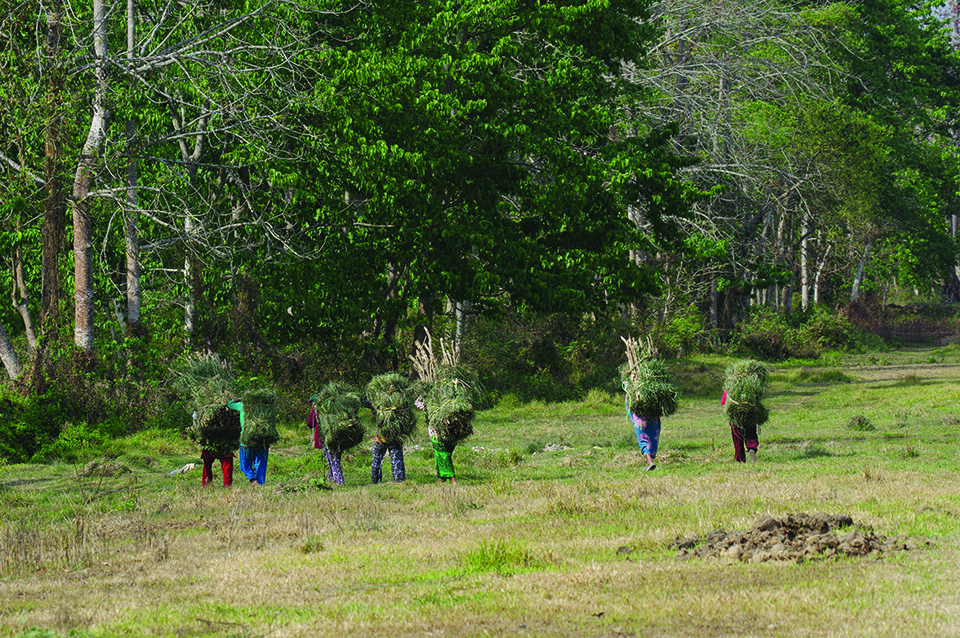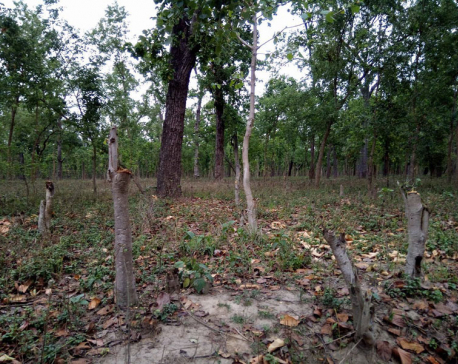
OR


Hiroto Mitsugi
The author is the Assistant Director-General, Forestry Department, Food and Agriculture Organization of the United Nations, based at headquarters in Romenews@myrepublica.com
More from Author
Our trees and our forests are essential to life on earth and to achieving a great many of the Sustainable Development Goals
Close your eyes and picture a tree: perhaps a sweet-smelling fir, a mighty oak, or a towering kapok tree. Maybe you remember a childhood tree fort, a favourite tree swing, or a fruit tree with a sweet windfall of apples or figs each year.
Now, imagine that tree as part of an immense forest, one of the many that together stretch across the globe and help to provide a path towards a sustainable future. Because that is the essence of what trees and forests do: they help provide the goods and services every human being needs for life on this planet—clean air, safe food and water, shelter, and medicines. Trees and forests have an essential role in any development plan, including the global 2030 Agenda for Sustainable Development with its call to action to end poverty, protect the planet and work towards peace and prosperity. Its 17 Sustainable Development Goals (SDGs) include ending poverty and hunger, protecting soil for agriculture, ensuring clean air and water, and fighting climate change.
Consider how the livelihoods of millions of people depend directly on their collection and sale of forest products, such as wood for fuel, timber, food items and plants to create medicines. Some 50 million Indian households rely on forest fruits for daily nourishment—which, by the way, is an example of how forests help to achieve zero hunger, one of the key Sustainable Development Goals (SDGs). Millions of others rely on wood fuel for cooking and heating water for cleaning.
Every one of us needs clean air to breathe and our world’s forests, covering one-third of the earth’s entire land surface, provide natural carbon sinks, soaking up massive volumes of greenhouse gases—2.6 billion tonnes of carbon dioxide each year. That’s about one-third of the total CO2 released from burning fossil fuels, all absorbed by the world’s forests. Indeed, it’s easy to see how forests play a pivotal part in very relevant development issues such as preventing degradation and desertification of land and improving soil fertility and quality for more robust, productive agriculture (also linked to zero hunger and SDG 2). Let’s not forget that forests are instrumental in preserving biodiversity, and host an extraordinary 80 percent of our planet’s animal and plant species.
Forests contribute to the livelihoods of millions of women and are therefore important to gender equality (another of the SDGs) and to empowering women and girls. In West Africa, some five million women base their livelihoods on collecting, processing and marketing shea nuts from trees. And since women are very likely to spend their earnings on food and other goods for their families, their forest-based incomes help in attaining zero hunger, improving children’s health and indirectly financing their education.
In urban settings, trees provide shade to cool hot climates and help clean the air. And most of us know how the presence of trees can help us to relax and breathe that fresh air. Additionally, one-third of the world’s largest cities obtain a significant proportion of their drinking water directly from forested areas, and overall, forested watersheds supply 75 percent of the planet’s accessible freshwater, subsequently used for drinking, household use and irrigation. Along coastlines, mangrove forests provide protection for the land from erosion while further inland, forests serve as a bulwark against floods and other natural disasters.
Despite all of these essential services provided by trees and forests, they face significant threats, including continued deforestation. In fact, deforestation rates in some regions, especially Africa and Latin America, are still alarmingly high. The good news, however, is that global rates of deforestation have decreased significantly in the recent past—from a net annual forest area loss of 7.3 million hectares (ha) in 2000 to 3.3 million ha in 2015.
And there is more good news. Projects like the Great Green Wall aim, among other measures, to plant a mosaic of green landscapes across North Africa, the Sahel and the Horn of Africa. And climate policy processes such as Reducing Emissions from Deforestation and Forest Degradation (REDD+) are working to preserve forests as a carbon catch.
Our trees and our forests are essential to life on earth and to achieve a great many of the Sustainable Development Goals: objectives which engender hope for a brighter tomorrow.
The author is the Assistant Director-General, Forestry Department, Food and Agriculture Organization of the United Nations, based at headquarters in Rome
You May Like This

Sustainable future for Nepal Emergency Preparedness Facility discussed
KATHMANDU, May 25: The Ministry of Home Affairs (MoHA), the United Kingdom’s Department for International Development (DFID), United Nations Resident... Read More...

Myagdi voters demand sustainable peace, prosperity
MYAGDI, Nov 27: The local people who have cast their vote in the November 26 elections, the first after the... Read More...

Rampant deforestation threatens community forests in Kailali
TIKAPUR, May 30: Some years ago, Prabhunarayan Chaudhari would not dare to walk alone through the dense jungle near Tikapur.... Read More...







Just In
- NRB to provide collateral-free loans to foreign employment seekers
- NEB to publish Grade 12 results next week
- Body handover begins; Relatives remain dissatisfied with insurance, compensation amount
- NC defers its plan to join Koshi govt
- NRB to review microfinance loan interest rate
- 134 dead in floods and landslides since onset of monsoon this year
- Mahakali Irrigation Project sees only 22 percent physical progress in 18 years
- Singapore now holds world's most powerful passport; Nepal stays at 98th











Leave A Comment